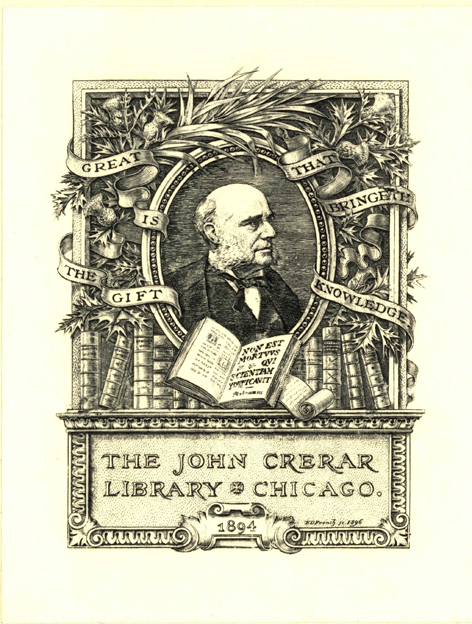Morse theoretic methods in nonlinear analysis and in symplectic topolgy /
Saved in:
| Meeting name: | NATO Advanced Study Institute on Morse Theoretic Methods in Nonlinear Analysis and Symplectic Topology (2004 : Montreal, Canada) |
|---|---|
| Imprint: | Dordrecht ; [Great Britain] : Springer, 2006. |
| Description: | xiv, 462 p. : ill. ; 25 cm. |
| Language: | English |
| Series: | NATO science series. Series II, Mathematics, physics, and chemistry 217 |
| Subject: | |
| Format: | Print Book |
| URL for this record: | http://pi.lib.uchicago.edu/1001/cat/bib/5897386 |
Table of Contents:
- Preface
- Contributors
- Lectures on the Morse Complex for Infinite-Dimensional Manifolds
- 1. A few facts from hyperbolic dynamics
- 1.1. Adapted norms
- 1.2. Linear stable and unstable spaces of an asymptotically hyperbolic path
- 1.3. Morse vector fields
- 1.4. Local dynamics near a hyperbolic rest point
- 1.5. Local stable and unstable manifolds
- 1.6. The Grobman - Hartman linearization theorem
- 1.7. Global stable and unstable manifolds
- 2. The Morse complex in the case of finite Morse indices
- 2.1. The Palais - Smale condition
- 2.2. The Morse - Smale condition
- 2.3. The assumptions
- 2.4. Forward compactness
- 2.5. Consequences of compactness and transversality
- 2.6. Cellular filtrations
- 2.7. The Morse complex
- 2.8. Representation of delta in terms of intersection numbers
- 2.9. How to remove the assumption (A8)
- 2.10. Morse functions on Hilbert manifolds
- 2.11. Basic results in transversality theory
- 2.12. Genericity of the Morse - Smale condition
- 2.13. Invariance of the Morse complex
- 3. The Morse complex in the case of infinite Morse indices
- 3.1. The program
- 3.2. Fredholm pairs and compact perturbations of linear subspaces
- 3.3. Finite-dimensional intersections
- 3.4. Essential subbundles
- 3.5. Orientations
- 3.6. Compactness
- 3.7. Two-dimensional intersections
- 3.8. The Morse complex
- Bibliographical note
- Notes on Floer Homology and Loop Space Homology
- 1. Introduction
- 2. Main result
- 2.1. Loop space homology
- 2.2. Floer homology for the cotangent bundle
- 3. Ring structures and ring-homomorphisms
- 3.1. The pair-of-pants product
- 3.2. The ring homomorphisms between free loop space Floer homology and based loop space Floer homology and classical homology
- 4. Morse-homology on the loop spaces Lambda and Omega, and the isomorphism
- 5. Products in Morse-homology
- 5.1. Ring isomorphism between Morse homology and Floer homology.- Homotopical Dynamics in Symplectic Topology
- 1. Introduction
- 2. Elements of Morse theory
- 2.1. Connecting manifolds
- 2.2. Operations
- 3. Applications to symplectic topology
- 3.1. Bounded orbits
- 3.2. Detection of pseudoholomorphic strips and Hofer's norm.- Morse Theory, Graphs, and String Topology
- 1. Graphs, Morse theory, and cohomology operations
- 2. String topology
- 3. A Morse theoretic view of string topology
- 4. Cylindrical holomorphic curves in the cotangent bundle.- Topology of Robot Motion Planning
- 1. Introduction
- 2. First examples of configuration spaces
- 3. Varieties of polygonal linkages
- 3.1. Short and long subsets
- 3.2. PoincarF polynomial of M(a)
- 4. Universality theorems for configuration spaces
- 5. A remark about configuration spaces in robotics
- 6. The motion planning problem
- 7. Tame motion planning algorithms
- 8. The Schwarz genus
- 9. The second notion of topological complexity
- 10. Homotopy invariance
- 11. Order of instability of a motion planning algorithm
- 12. Random motion planningalgorithms
- 13. Equality theorem
- 14. An upper bound for TC(X)
- 15. A cohomological lower bound for TC(X)
- 16. Examples
- 17. Simultaneous control of many systems
- 18. Another inequality relating TC(X) to the usual category
- 19. Topological complexity of bouquets
- 20. A general recipe to construct a motion planning algorithm
- 21. How difficult is to avoid collisions in $ mathbb{{R}}$m?
- 22. The case m = 2
- 23. TC(F($ mathbb{{R}}$m; n) in the case m $ geq$ 3 odd
- 24. Shade
- 25. Illuminating the complement of the braid arrangement
- 26. A quadratic motion planning algorithm in F($ mathbb{{R}}$m; n)
- 27. Configuration spaces of graphs
- 28. Motion planning in projective spaces
- 29. Nonsingular maps
- 30. TC(($ mathbb{{R}}$Pn) and the immersion problem
- 31. Some open problems.- Application of Floer Homology of Langrangian Submanifolds to Symplectic Topology
- 1. Introduction
- 2. Lagrangian submanifold of $ mathbb{{C}}$n
- 3. Perturbing Cauchy - Riemann equation
- 4. Maslov index of Lagrangian submanifold with vanishing second Betti number
- 5. Floer ho

